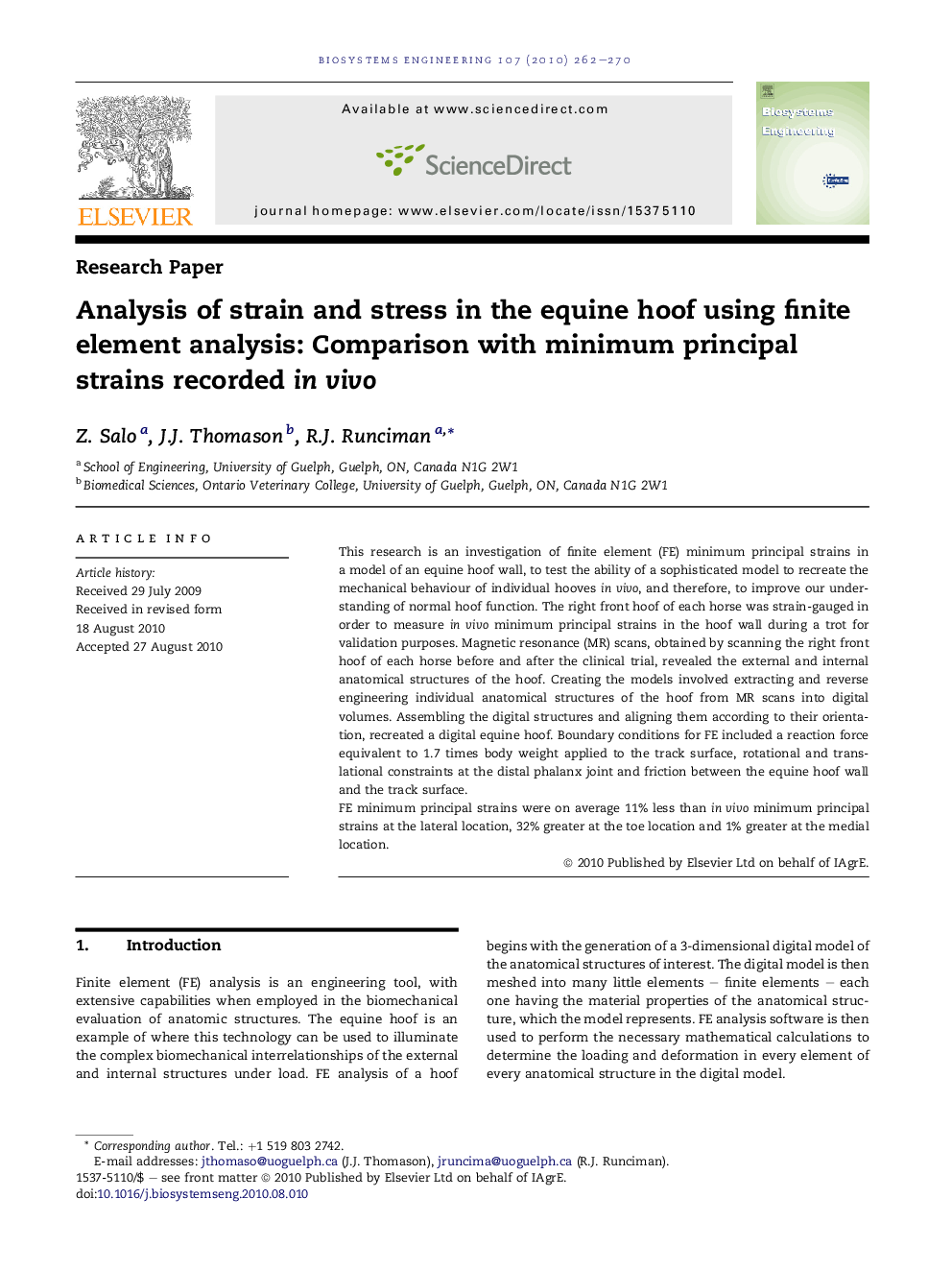| Article ID | Journal | Published Year | Pages | File Type |
|---|---|---|---|---|
| 1711870 | Biosystems Engineering | 2010 | 9 Pages |
This research is an investigation of finite element (FE) minimum principal strains in a model of an equine hoof wall, to test the ability of a sophisticated model to recreate the mechanical behaviour of individual hooves in vivo, and therefore, to improve our understanding of normal hoof function. The right front hoof of each horse was strain-gauged in order to measure in vivo minimum principal strains in the hoof wall during a trot for validation purposes. Magnetic resonance (MR) scans, obtained by scanning the right front hoof of each horse before and after the clinical trial, revealed the external and internal anatomical structures of the hoof. Creating the models involved extracting and reverse engineering individual anatomical structures of the hoof from MR scans into digital volumes. Assembling the digital structures and aligning them according to their orientation, recreated a digital equine hoof. Boundary conditions for FE included a reaction force equivalent to 1.7 times body weight applied to the track surface, rotational and translational constraints at the distal phalanx joint and friction between the equine hoof wall and the track surface.FE minimum principal strains were on average 11% less than in vivo minimum principal strains at the lateral location, 32% greater at the toe location and 1% greater at the medial location.
Research highlights► Specimen-specific finite element models of equine hoofs from MR images ► Comparison of finite element principal hoof wall strains with experimental data ► Qualitative description of hoof wall deformation ► Strain at toe location 34% better predicted than with previous models ► Demonstration of vertical and horizontal surface strain gradients on the hoof wall
